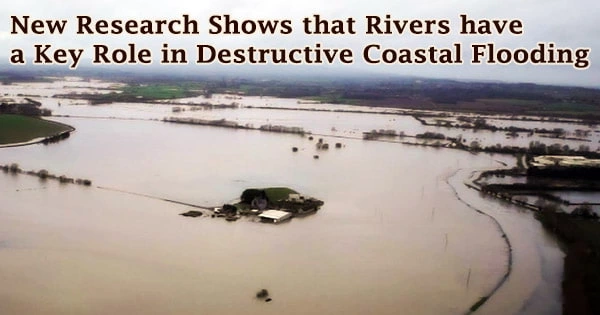If you believe that living away from the shore protects you from climate change and rising waves, you are mistaken. Rising rivers, according to a new study from a University of South Carolina professor, are a threat both along the shore and further inland.
Scientists need to pay greater attention to how climate change is influencing rivers, according to Steve Dykstra, a postdoctoral research fellow in the School of the Earth, Ocean, and Environment.
What’s at stake: Coastal floods are becoming more common, and climate change may be to blame. River dynamics, according to Dykstra, are usually disregarded in discussions about coastal flooding, but they require more attention.
People who study oceans stop where there is salt. People who study rivers stop where there is a tide, sometimes 200 miles inland. We’re missing the other side of the puzzle.
Steve Dykstra
Dykstra’s study, which he co-authored with Brian Dzwonkowski, examines precipitation, river levels, and river discharge in the Northeast Gulf of Mexico on a regional scale. It is the first to show how:
- Larger volumes of precipitation go faster to the shore downstream. As a result, there will be increased river flooding and a higher risk of compound flooding, which occurs when ocean storm surge meets river discharge.
- Inland, when tides become little and vanish, compound flooding occurrences are most common. People who reside near inland rivers are at risk as a result of this phenomena.
- As the climate warms and precipitation intensifies, coastal flooding is predicted to grow.
State of play: Current coastal flooding research, according to Dykstra, is mostly focused on how global warming trends influence ocean processes, ignoring how river flooding might affect coastal locations and even interact with ocean processes to generate more extreme floods.
Warmer air may store more water, resulting in more severe precipitation. Dykstra demonstrates that this has an impact on entire watersheds all the way to the shore, a location where river flooding was previously assumed to be minimal.
“People who study oceans stop where there is salt. People who study rivers stop where there is a tide, sometimes 200 miles inland,” Dykstra says. “We’re missing the other side of the puzzle.”
Dykstra is attempting to bridge the gap. He believes that comprehending flood hazards requires a flexible strategy that evolves over time. To distinguish between normal river activities and those driven by climate change, he looked at 90 years of river data and 120 years of precipitation data.
What Dykstra says can be done:
- Scientists and policymakers need to account for rivers when talking about coastal flooding.
- Data sets used to track river processes need to extend over significant lengths of time.
- Researchers need to account for changes over time to understand flood risks.
- Scientists must apply this new knowledge to properly identify the areas most vulnerable to compound floods.





